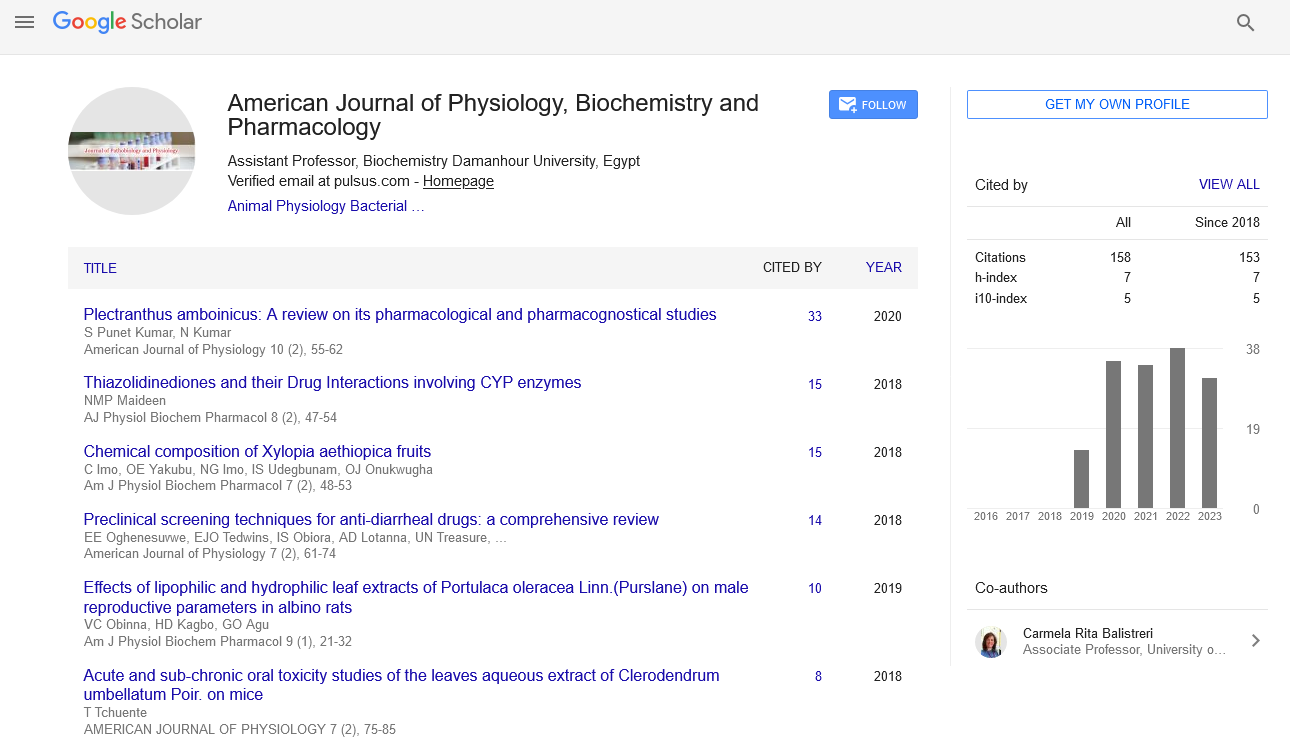Perspective Article - American Journal of Physiology, Biochemistry and Pharmacology (2024)
Digital Revolution in Biology: Expanding Horizons of Bioinformatics of Data and Discovery
Susan Fabre*Susan Fabre, Department of Medicine, University of California, California, USA, Email: susanf@gmail.com
Received: 21-Aug-2024, Manuscript No. AJPBP-24-148476; Editor assigned: 23-Aug-2024, Pre QC No. AJPBP-24-148476 (PQ); Reviewed: 06-Sep-2024, QC No. AJPBP-24-148476; Revised: 16-Sep-2024, Manuscript No. AJPBP-24-148476 (R); Published: 23-Sep-2024
Description
Bioinformatics is a multidisciplinary field that integrates biology, computer science, mathematics, and statistics to analyse and interpret complex biological data. As the volume of biological information continues to grow exponentially, particularly with advances in genomic and proteomic technologies, bioinformatics plays a crucial role in processing, storing, and analysing this data to derive meaningful insights. The field has become an indispensable part of modern biological research, aiding in various applications from drug discovery to personalized medicine.
The genesis of bioinformatics
The inception of bioinformatics can be traced back to the early 1970s with the development of the first algorithms for sequence alignment and the creation of databases for storing biological sequences. The National Center for Biotechnology Information (NCBI) was established in 1988, providing essential resources like GenBank, a repository for DNA sequences. Over the years, the field has evolved significantly, propelled by advancements in high-throughput technologies such as Next-Generation Sequencing (NGS), which allows for rapid sequencing of entire genomes.
Key components of bioinformatics
The bioinformatics covers many specialized and advanced areas of biology. There are:
Data storage and management: With the massive influx of biological data, bioinformatics emphasizes the development of databases and data management systems. Efficient storage solutions are critical for organizing genomic, transcriptomic, and proteomic data. This ensures that researchers can access and analyse data promptly and effectively.
Sequence analysis: One of the core functions of bioinformatics is the analysis of biological sequences, including DNA, RNA, and protein sequences. Tools like BLAST (Basic Local Alignment Search Tool) allow researchers to compare sequences and identify similarities, which is essential for understanding evolutionary relationships and functional genomics.
Structural bioinformatics: This subfield focuses on the analysis and prediction of the three-dimensional structures of biological macromolecules. Understanding the structure of proteins, for instance, is crucial for elucidating their functions and interactions. Software tools like PyMOL and Chimera facilitate the visualization and modelling of biomolecular structures.
Genomic and transcriptomic analysis: Bioinformatics tools are essential for analysing genomic and transcriptomic data, enabling researchers to identify gene expression patterns, alternative splicing events, and regulatory elements. Techniques such as RNA sequencing (RNA-seq) have revolutionized our understanding of gene expression and regulation, with bioinformatics playing a central role in data processing and interpretation.
Proteomics and metabolomics: Beyond nucleic acids, bioinformatics also extends to proteomics and metabolomics, where it aids in the identification and quantification of proteins and metabolites in biological samples. This holistic approach allows for a comprehensive understanding of cellular processes and metabolic pathways.
Applications of bioinformatics
Bioinformatics is expected to have many future applications, including:
Drug discovery: Bioinformatics has transformed the drug discovery process by enabling the identification of potential drug targets, screening of compound libraries, and prediction of drug interactions. In silico modelling and virtual screening help researchers identify promising candidates before advancing to costly experimental validation.
Personalized medicine: The rise of genomics has paved the way for personalized medicine, where treatments are tailored based on an individual’s genetic makeup. Bioinformatics tools analyse genomic data to identify genetic variants that influence drug responses, enabling more effective and safer treatment strategies.
Disease research: Bioinformatics plays a critical role in understanding the genetic basis of diseases, including cancer, by analysing large-scale genomic datasets. By identifying mutations and alterations in signalling pathways, researchers can develop targeted therapies that address the specific molecular mechanisms driving a disease.
Agricultural biotechnology: In agriculture, bioinformatics aids in the development of Genetically Modified Organisms (GMOs) and crop improvement strategies. By analysing plant genomes, researchers can identify traits associated with disease resistance, drought tolerance, and improved yield.
Challenges and future directions
Despite its successes, bioinformatics faces several challenges. The complexity of biological data, variability among species, and the need for standardized protocols pose hurdles for researchers. Additionally, issues related to data privacy, especially in human genomics, necessitate ethical considerations and robust data governance frameworks.
Looking forward, the field of bioinformatics is poised for growth, with emerging technologies such as artificial intelligence and machine learning offering new avenues for data analysis. These techniques can uncover hidden patterns in large datasets, enhancing our understanding of biological systems and facilitating discoveries that were previously unattainable.
Conclusion
In summary, bioinformatics serves as a potential role between biology and technology, enabling researchers to harness the power of computational tools to analyse complex biological data. Its applications span a wide range of fields, from medicine to agriculture, making it an essential component of contemporary biological research. As the field continues to evolve, bioinformatics will undoubtedly play a pivotal role in advancing our understanding of life sciences and improving human health.






